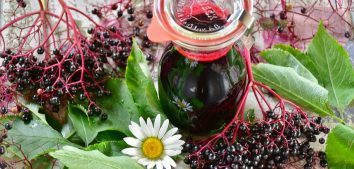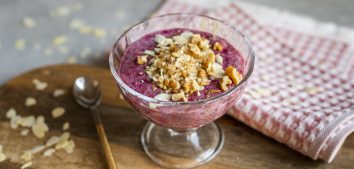
Asparagus – the May Superfood!
It’s May and this means it’s time for asparagus! A nutritious, low-calorie vegetable that should be on everyone’s plate. It is worth taking advantage of their availability, and at the same time provide your body with many valuable nutrients. Get to know the advantages and uses of one of the 20 best vegetable plants in the world.
Asparagus (Asparagus officinalis L.) is a seasonal vegetable cultivated in all regions of the world – mainly in China, Western Europe, North America and Peru. However, Poland is not one of the countries with large asparagus production, and the crops are mostly exported to Germany.
Asparagus is characterized by excellent health-promoting properties and great culinary qualities. The volatile ingredients they contain such as pyrazines and sulfur-containing compounds emphasize their taste and smell, making your meal full of flavor and, of course, health. Today, asparagus is widely eaten around the world. Interestingly, their potential healing properties are still appreciated in Traditional Chinese Medicine practices.
Growing Asparagus
Asparagus is mainly a food plant, eaten only in the form of very young, thickened sprigs, called spears. They belong to the class of angiosperms, the class of monocots and the subclass of lilies, and are perennial vegetables. The underground parts of plants do not die after the vegetation period, but overwinter in the soil. In the following year, they produce new sprigs above the ground that bear fruit and bloom. Edible parts grow from the buds of plants, i.e. sprigs otherwise known as bracts. They are white because they grow without light. Subjected to solar radiation, they acquire a purple color, and then green.
Seasonality
Asparagus is a seasonal vegetable, so the best time to take advantage of their goodness, freshness and taste is from the end of April to the end of June. May and June are the best time to buy good, fresh and tasty asparagus. Out of season, we can use frozen or possibly canned asparagus.
Types of Asparagus
There are 9 varieties of asparagus in the Polish national register. In terms of color, we can find different types of asparagus at markets and in stores – green (and even green and purple), as well as the most popular in Europe – white. The main difference is whether the sprigs are harvested above the ground and the crops are very well sunlit (it’s the green asparagus) or underground, which do not have access to light, which is why they are white as the plant does not produce chlorophyll (it’s the white asparagus). Purple asparagus is an intermediate variety that can also be found in shops now. They differ from whites and greens in that they contain more sugars and less fiber.
The Taste
The most popular, white asparagus is characterized by a delicate and mild taste. The latter – in addition to a distinctive green color, they also have a rather sharp and more intense taste. This variety allows you to use two types of asparagus and be creative in your cooking.
Asparagus is often compared in taste to white wines with a grassy structure, such as the Sauvignon Blanc variety. Other wines that have been linked to asparagus include fresh, spicy, and bitter notes. The taste is due to the presence of aldehydes, pyrazines and sulfur compounds.

Health Benefits
The main advantage of asparagus is that it’s low in calories – it contains about 20 kcal in 100g of the product. These plants, in addition to the content of dietary fiber, are rich in many biologically active compounds. Many of us rightly associate them with folic acid, but also vitamins such as C, E, A, beta-carotene and minerals: potassium, calcium, phosphorus, magnesium, sodium, iron. It is worth noting that these valuable properties have a positive effect on the condition of hair, skin and nails.
What’s more, these plants contain glutathione, which has a positive effect on the respiratory system and the detoxifying function of the liver, as well as and inulin – a natural prebiotic, i.e. an ingredient that stimulates the growth of beneficial intestinal microflora bacteria.
Asparagus is also a source of plant sterols. The nutritional role of phytosterols is associated with the ability to lower blood cholesterol levels and inhibit intestinal cholesterol uptake. What else can we find in asparagus? It is also a good source of protodioscin, which is cytotoxic to human cancer cells, and also has a very positive effect on strengthening the immune system.
Among the flavonoids that have antioxidant effects in asparagus, we find mainly rutin and quercetin, which have antibiotic and anti-cancer effects. Asparagus antioxidants have a positive effect on the cardiovascular system
It is also worth mentioning two acids found in the plant: coumarin and ferulic, which also have strong antioxidant properties, thus preventing e.g., Alzheimer’s disease and cancer. And best of all, this special power of antioxidants contained in plants additionally delays the aging process.
It should also be noted that asparagus is a vegetable that also contains a large amount of purines, which unfortunately affect the accumulation of large amounts of uric acid in the body. Therefore, they are not recommended for people struggling with gout or uric acid stones.
Use in the Kitchen
This spring delicacy that benefits your health so much should be in your kitchen right now. In addition to their enormous health benefits, they are also perfect for cooking. What are your ideas for using them? Exquisite dishes using asparagus are real aphrodisiacs. For the most part, asparagus will be great in a savory version as an ingredient in soups, asparagus cream, casseroles, savory tarts, salads or pasta. Creativity in the kitchen knows no bounds and, of course, asparagus will also be used in a sweet version – combined with seasonal strawberries or blueberries, they can serve as an alternative, health-promoting snack. Culinary inspirations using asparagus can be found in the Diet&Training by Ann application and Super Menu catering. Pasta with asparagus, soups, salads, fish and meat dishes in combination with this tasty vegetable are waiting for you. Nothing more, nothing less – buy asparagus, cook and enjoy these goodies.
Summary
Asparagus is a valuable and low-calorie vegetable that is worth including in your diet. It occurs seasonally, so take advantage of its nutritional values in May and June. It is really versatile in cooking, adding flavor to our spring cuisine, and at the same time providing our bodies with numerous health-promoting properties.
Bibliography:
- Cieślik E.,Siembida A,Charakterystyka wartości odżywczej i właściwości prozdrowotnych szparaga lekarskiego (Asparagus officinalis L.). Postępy Fitoterapii. 2011 Apr; 275-281.
- Eirini Pegiou,Roland Mumm, Parag Acharya, Ric C. H. de Vos, Robert D. Hall. Green and White Asparagus (Asparagus officinalis): A Source of Developmental, Chemical and Urinary Intrigue.Metabolites. 2020 Jan; 10(1): 17, 1-23.
- Meng Wang, Shuang Wang, Wenjing Hu, Zhibin Wang, Bingyou Yang, and Haixue Kuang. Asparagus cochinchinensis: A review of its botany, traditional uses, phytochemistry, pharmacology, and applications. Front Pharmacol. 2022; 13: 1-22.
- Slatnar, A.; Petkovsek, M.M.; Stampar, F.; Veberic, R.; Horvat, J.; Jakse, M.; Sircelj, H. Game of Tones: Sugars, organic acids, and phenolics in green and purple asparagus (Asparagus officinalis L.) cultivars. Turk. J. Agric. For. 2018; 42, 55–66.
- Szczepaniak O.,Dziedzińśki M.,Szymańśka D., Szulc P., Bielec D.,Kobus-Cisowska J.Uprawa szparaga (Asparagus officinalis L.) jako surowca o właściwościach funkcjonalnych cz.I. Charakterystyka towaroznawcza. Technika Rolnicza Ogrodnicza Leśna. 2019 Feb; 1-6.










Comments No Comments
Join the discussion…